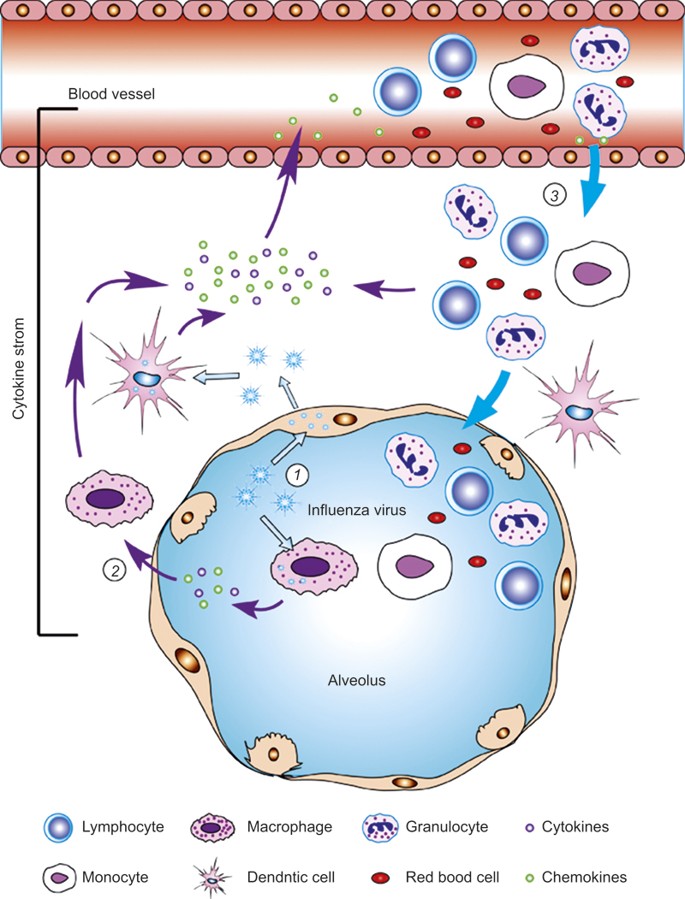
Maybe you had never heard about it or so much about it until now.
The COVID-19 pandemic has brought the term cytokine storm into the forefront of information.
What is a cytokine storm?
The term describes an overreaction of the body’s immune system in which it releases immune messengers, called cytokines, into the bloodstream out of proportion to the threat or long after the virus is no longer a threat. When this happens, the immune system attacks the body’s own tissues, potentially causing significant harm. (1)
This exaggerated inflammatory response may damage the liver, blood vessels, kidneys, and lungs, and increase the formation of blood clots throughout the body. Ultimately, the cytokine storm may cause more harm than the coronavirus itself.
Though COVID-19 has been circulating for only a few months, early research shows that like other infections, it, too, may cause this kind of catastrophic immune problem. (2) (3)
Approaches to Treating the Cytokine Storm
Doctors are only now coming to understand cytokine storms and how to treat them but for any treatment to work, catching the storm as it is happening is crucial.
Even though there’s no fail-safe diagnostic test, there are signs that a storm may be underway. For example, blood testing may reveal if the protein ferritin is elevated or if there are high concentrations of the inflammation indicator C-reactive protein, which is made by the liver.
A hyperactive immune response isn’t unique to COVID-19. People with autoimmune diseases and cancer patients receiving immunotherapy can experience similar symptoms.
Steroids are often the first choice of treatment. They act broadly to dampen the immune system — but, of course, that system is needed at a lower intensity to fight invaders.
There are also medications that for example – block specific cytokines while leaving a good immune response intact. They have worked for some cancer and rheumatoid arthritis patients and are currently being tested for COVID-19 patients. (4) (5)
Research also shows that elevated HMGB1 levels — the molecule that triggers the release of inflammatory cytokines —
have now been found to be associated with many acute and chronic inflammation-related disorders, including many that are known to create more serious complications for COVID-19 patients:
- Asthma and chronic obstructive pulmonary disease (COPD)
- Atherosclerosis, lipid disturbances, and their consequences, coronary artery disease, heart attacks, strokes, and congestive heart failure
- Autoimmune disorders, including lupus, multiple sclerosis, rheumatoid arthritis, type I diabetes, and others
- Cancer
- Diabetes
- Obesity
While more research is still needed, HMGB1-neutralizing antibodies may be the key to gaining protection from chronic, inflammation-induced diseases and slow down certain aging processes in your body. (6) (7)
Other important treatment factors include maintaining water, electrolyte and acid-base balance, nutritional support, hormone therapy, non-steroidal anti-inflammatory drugs, and free radical scavengers like vitamin C in high doses.
- https://www.health.com/condition/infectious-diseases/coronavirus/cytokine-storm
- https://www.webmd.com/lung/news/20200417/cytokine-storms-may-be-fueling-some-covid-deaths
- https://onlinelibrary.wiley.com/doi/epdf/10.1002/art.41285
- https://clinicaltrials.gov/ct2/show/NCT04315480
- https://www.covid19treatmentguidelines.nih.gov/whats-new/
- https://pubmed.ncbi.nlm.nih.gov/22845335/
- https://pubmed.ncbi.nlm.nih.gov/32380958/



